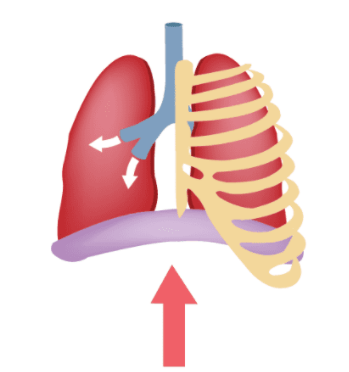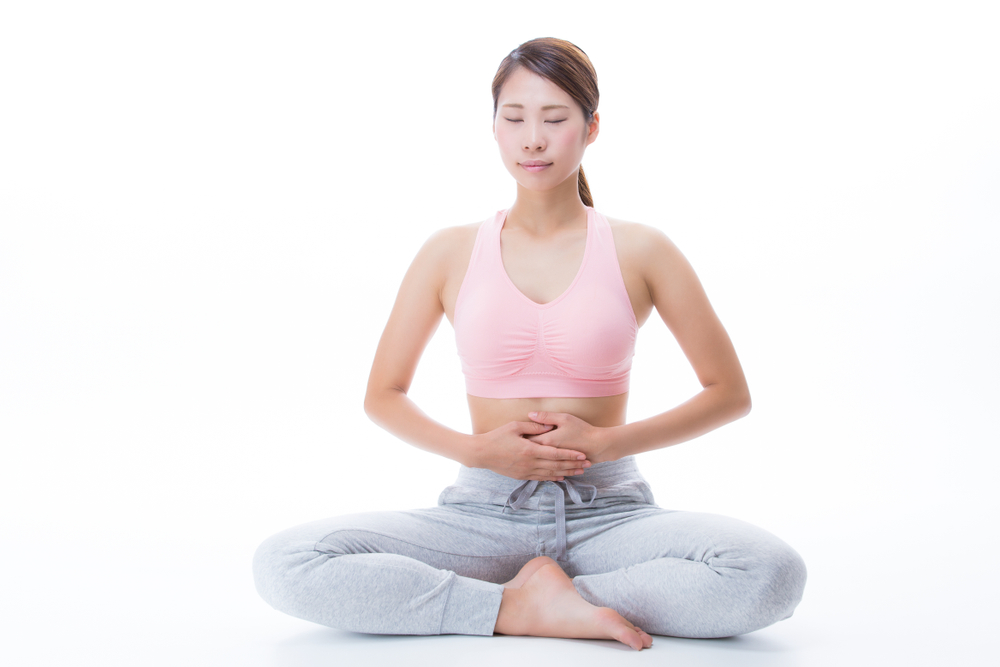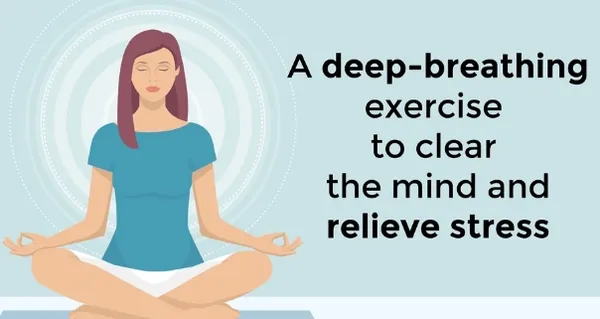Breathing is an automatic function of the body that is controlled by the respiratory centre of the brain. When we feel stressed, our breathing rate and pattern changes as part of the ‘fight-or-flight response’.
Fortunately, we also have the power to deliberately change our own breathing. Scientific studies have shown that controlling your breath can help to manage stress and stress-related conditions. Breath control is also used in practices such as yoga, tai chi and some forms of meditation. Many people use their breathing to help promote relaxation and reduce stress.

Breathing and stress
The primary role of breathing is to absorb oxygen and to expel carbon dioxide through the movement of the lungs. Muscles that control the movement of the lungs are the diaphragm (a sheet of muscle underneath the lungs) and the muscles between the ribs.
When a person is under stress, their breathing pattern changes. Typically, an anxious person takes small, shallow breaths, using their shoulders rather than their diaphragm to move air in and out of their lungs. This style of breathing disrupts the balance of gases in the body.
Shallow over-breathing, or hyperventilation, can prolong feelings of anxiety by making the physical symptoms of stress worse. Controlling your breathing can help to improve some of these symptoms.
Relaxation response
When a person is relaxed, they breathe through their nose in a slow, even and gentle way. Deliberately copying a relaxed breathing pattern seems to calm the nervous system that controls the body’s involuntary functions.
Controlled breathing can cause physiological changes that include:
- lowered blood pressure and heart rate
- reduced levels of stress hormones in the blood
- reduced lactic acid build-up in muscle tissue
- balanced levels of oxygen and carbon dioxide in the blood
- improved immune system functioning
- increased physical energy
- increased feelings of calm and wellbeing.
Special considerations
Some people find that concentrating on their breath actually provokes panic and hyperventilation. If this happens to you, look for another way to relax.
Abdominal breathing

There are different breathing techniques to bring about relaxation. In essence, the general aim is to shift from upper chest breathing to abdominal breathing. You will need a quiet, relaxed environment where you won’t be disturbed for 10 to 20 minutes. Set an alarm if you don’t want to lose track of time.
Sit comfortably and raise your ribcage to expand your chest. Place one hand on your chest and the other on your abdomen. Take notice of how your upper chest and abdomen are moving while you breathe. Concentrate on your breath and try to gently breathe in and out through the nose. Your upper chest and stomach should be still, allowing the diaphragm to work more efficiently with your abdomen rather than your chest.
With each breath, allow any tension in your body to slip away. Once you are breathing slowly and with your abdomen, sit quietly and enjoy the sensation of physical relaxation.
DIAPHRAGMATIC BREATHING TUTORIAL
- Start by getting comfortable. Loosen any restrictive clothing, and find a position that is comfortable for you – this may be sitting down, laying down, or if that’s not possible, standing up.
- In your comfortable position, rest your feet on the floor, and place one hand on your chest, and the other hand on your belly.Through your nose, let your breath flow deep down into your abdomen, feeling your belly expand into the hand above it. The hand above your chest wants to remain as still as possible.Breathe out through pursed lips, slow and steady.Repeat steps 3 and 4, concentrating on your technique and timing, taking slower and deeper breaths than your regular breathing pattern, in and out.
- Continue for 3-5 minutes, or until you feel calmer.

ADD A COUNTING PATTERN TO YOUR DEEP BREATHING
Once you have gotten used to breathing deeply using your diaphragm, you might try adding a counting pattern to help focus the mind and down-regulate your physical stress response. Remember to go at your own pace, especially if you are new to conscious breathing and/or are working with cardio-respiratory conditions.
3-4 BREATHING
Count to 3 on each inhale, and exhale for 4 counts. As long as each inhale is noticeably shorter than each exhale, you can take this pattern at a pace that feels good for you. Try this if your thoughts are distracting you from sleep, or after a sweaty workout when your heart is racing.
5-5 BREATHING
Count to 5 on each inhale and exhale. Gradually increase the time between each count until each count represents 1 second, so that each complete breath cycle takes 10 seconds. This can be done at any time, at any place, when you want to calm your nerves and take a moment for yourself.
4-1-7 BREATHING
One to try when you are comfortably breathing 5-5 at 1 second per count.
Count to 4 on each inhale, hold the breath for 1 count, and exhale for 7 counts. The brief breath hold helps to strengthen your breathing muscles, while the long exhale relative to inhale is particularly effective for combating stress and anxiety.
Where to get help
- Your doctor
- Stress management specialist, such as psychologist
Things to remember
- Shallow, upper chest breathing is part of the typical stress response.
- The stress response can be reduced by consciously breathing using the diaphragm.
- Abdominal breathing helps to control the nervous system and encourages the body to relax, bringing about a range of health benefits.